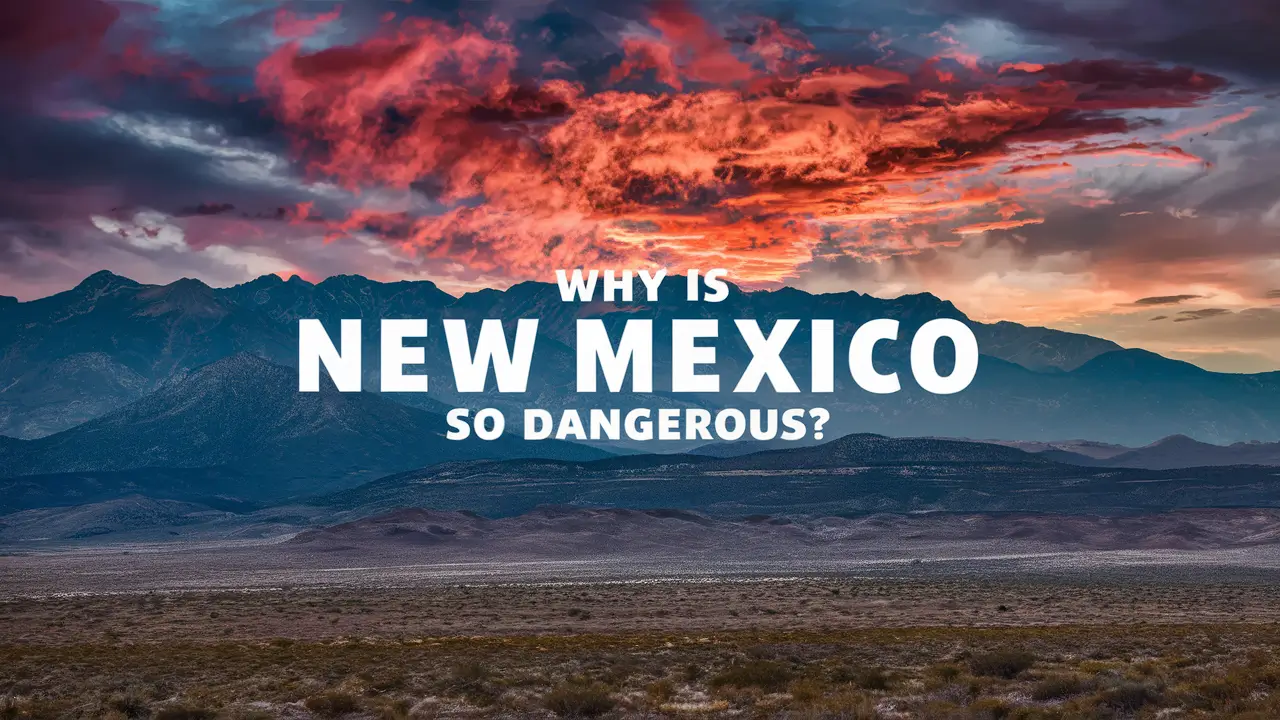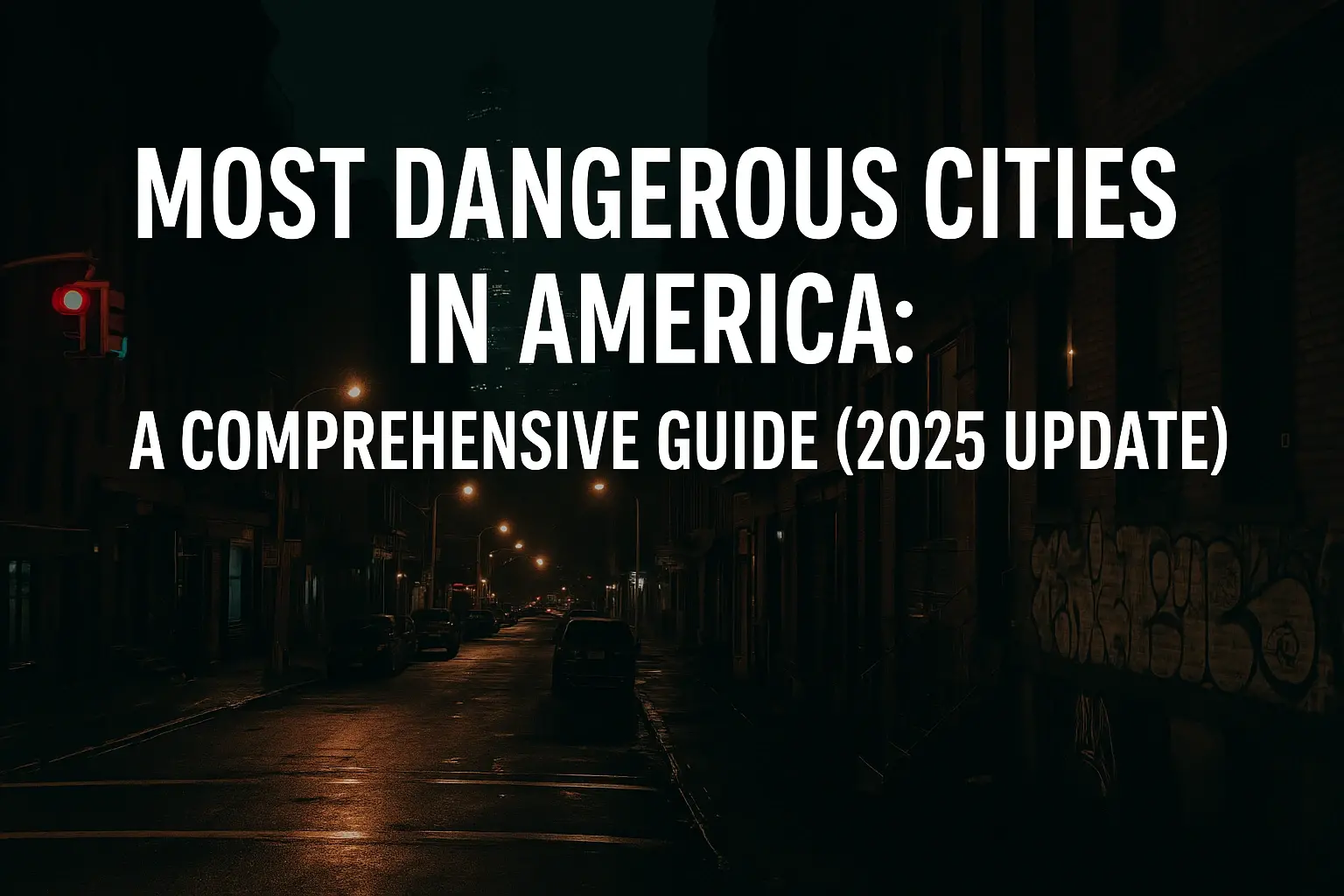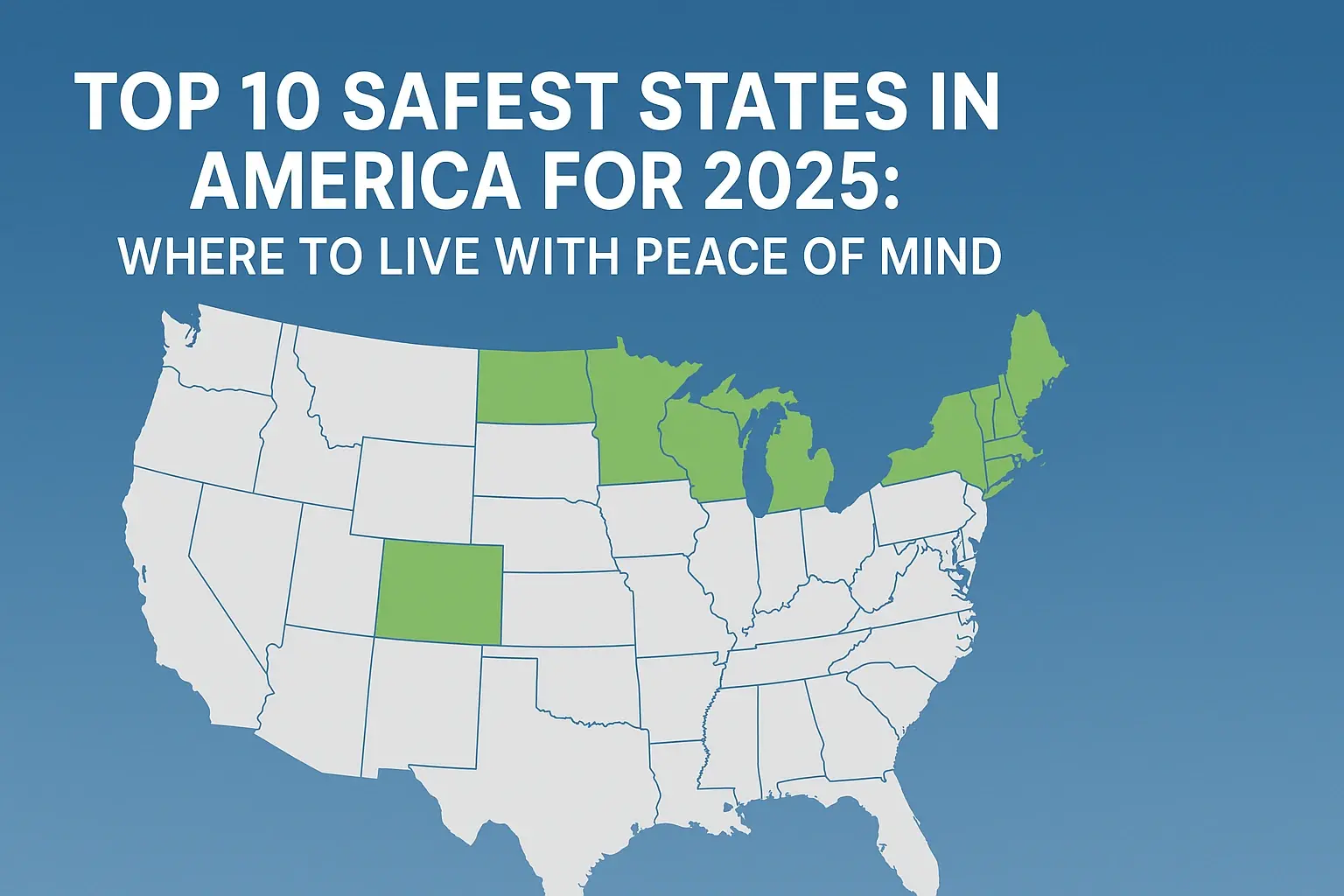New Mexico, often celebrated for its rich cultural heritage, stunning landscapes, and vibrant history, has unfortunately earned a reputation as one of the most dangerous states in the United States. With consistently high violent and property crime rates, the state faces unique challenges that contribute to its ranking as the most dangerous state in 2024, according to recent analyses. This in-depth exploration examines the socioeconomic, historical, and systemic factors driving New Mexico’s high crime rates, focusing on urban centers like Albuquerque and Gallup, while also addressing the broader context of rural areas and Native American communities.
Crime Statistics: A Stark Reality
New Mexico’s crime rates are among the highest in the nation. The state’s violent crime rate stands at approximately 7.8 incidents per 1,000 residents, nearly double the national average of 4.0. Property crime is also a significant issue, with a rate of 29.84 per 1,000 residents, compared to the national average of 20. Cities like Gallup, Taos, and Albuquerque consistently rank among the most dangerous in the state, with Gallup reporting a violent crime rate of 15.54 per 1,000 and a property crime rate of 48 per 1,000. Albuquerque, the state’s largest city, accounts for a disproportionate share of violent (42.7%) and property (47%) crimes, despite housing only 27% of the population. These statistics highlight the concentrated nature of crime in urban areas, but rural regions and Native American reservations also face unique challenges.
Socioeconomic Factors Driving Crime
Economic hardship is a primary driver of New Mexico’s high crime rates. The state has one of the highest poverty rates in the U.S., with approximately 18.2% of residents living below the poverty line. This economic despair is particularly pronounced in urban centers like Albuquerque and smaller cities like Belen, where limited access to stable employment and quality education fuels desperation. Low educational attainment, with New Mexico ranking among the lowest in the nation for school performance, further limits economic opportunities, creating a cycle where individuals may turn to illegal activities to survive.
Unemployment, particularly in rural areas and Native American communities, exacerbates these issues. The lack of economic development in these regions leaves residents with few prospects, contributing to property crimes like burglary and larceny, which are prevalent across the state. For example, Taos, a tourist destination known for its art and culture, has the highest property crime rate in New Mexico at 54.34 per 1,000 residents, driven partly by economic disparities and seasonal population fluctuations.
Substance Abuse and Its Role
Substance abuse is a significant contributor to New Mexico’s crime problem. The state has struggled with high rates of opioid addiction and methamphetamine use, which often lead to both violent and property crimes as individuals seek to fund their habits. Since the 1990s, New Mexico has led the Western U.S. in drug overdose deaths, primarily due to opioids. In 2020, alcohol was involved in at least 42% of homicide victims’ toxicology reports and 32% of suicide deaths, indicating a strong link between substance abuse and violent outcomes. Cities like Gallup, located in McKinley County, face severe alcohol-related crime issues, with the county having the highest per capita alcohol-related deaths in the state.
Note: Alcohol-related crimes in Gallup are compounded by jurisdictional complexities between tribal, local, and state authorities, making enforcement challenging.
Impact of Drug Trafficking and Proximity to the Border
New Mexico’s location along major transportation corridors, such as Interstates 25 and 40, makes it a hub for drug trafficking. The state’s proximity to the U.S.-Mexico border facilitates the flow of illegal drugs, including cocaine, methamphetamine, and heroin, much of which is destined for U.S. markets. Mexican drug cartels, such as the Sinaloa and Juárez cartels, play a significant role in this trade, often collaborating with local gangs to distribute narcotics. This activity fuels violence, particularly in cities like Las Cruces, located just 40 miles from the border, where drug-related crimes contribute to a property crime rate of 54.02 per 1,000 residents.
The fragmentation of cartels into smaller, more violent factions has led to turf wars over smuggling routes, further escalating violence in border-adjacent areas. While the border itself is not the sole cause of crime, the influx of drugs and associated gang activity significantly impacts urban centers like Albuquerque and smaller towns like Deming.
Challenges in Native American Communities
Native American communities in New Mexico, particularly those on reservations, face disproportionately high crime rates. According to the U.S. Department of Justice, Native Americans experience violent crime at rates more than double those of other racial groups. Jurisdictional complexities between tribal, state, and federal authorities often create gaps in law enforcement, allowing criminal activities to go unaddressed. Historical trauma, systemic discrimination, and pervasive poverty—exacerbated by limited access to healthcare and education—contribute to social and economic disparities that drive crime in these communities. For example, Gallup, located near the Navajo Nation, struggles with high rates of alcohol-related crimes and property theft, partly due to these systemic issues.
Systemic Issues in Law Enforcement
New Mexico’s law enforcement faces significant challenges that hinder crime prevention. The state has one of the highest rates of police killings in the U.S., often attributed to inadequate training and inconsistent policies across its numerous law enforcement agencies. Only 47% of agencies comply with state-mandated training reporting requirements, leading to situations where officers may lack the necessary skills to handle complex situations. High gun ownership, rooted in the state’s rural culture and hunting traditions, also complicates police interactions, as officers often assume individuals are armed, increasing the likelihood of fatal encounters.
In urban areas like Albuquerque, law enforcement struggles with understaffing and high crime volumes. The city’s violent crime rate, 149.36% worse than the national average, places immense pressure on police resources. Community policing initiatives and specialized response units for mental health and substance abuse calls have shown promise, but inconsistent implementation limits their effectiveness.
Warning: While community-based initiatives are making strides, systemic issues like underfunded police training and jurisdictional overlaps require long-term solutions to improve safety.
Geographic and Infrastructure Challenges
New Mexico’s geography contributes to its crime problem. The state’s vast deserts, mountainous terrain, and isolated rural areas provide ideal hiding spots for criminal activity. Rural roads, such as NM 567 and NM 31, are not only dangerous for drivers due to poor conditions but also facilitate illegal activities like drug smuggling. The state’s infrastructure, including neglected roads and limited access to healthcare in rural areas, exacerbates unsafe living conditions, leaving residents vulnerable.
In urban centers, high-traffic areas like St. Michael’s Drive in Santa Fe see frequent pedestrian accidents and property crimes due to crowded commercial zones. The combination of geographic isolation and urban density creates a complex crime landscape that is difficult to manage.
In New Mexico, both violent and property crime rates are significantly above national averages — violent crimes occur at roughly 717 per 100,000 residents, and property crimes hover around 2,751 per 100,000. For homeowners, these statistics translate into a heightened risk: break-ins, theft of vehicles, vandalism, and even more severe incidents like robbery or assault are more likely. Rural and Native American reservation areas often have fewer law enforcement resources, longer response times, and sometimes less infrastructure for preventative security. As a result, investing in robust home security — strong doors and locks, surveillance cameras, good lighting, alarm systems, neighborhood watch programs — becomes less of a luxury and more of a necessity for many.
Community and Policy Responses
Despite these challenges, New Mexico is making efforts to address its crime problem. Community organizations are focusing on youth engagement, substance abuse prevention, and economic development to tackle the root causes of crime. For example, grassroots initiatives in Gallup have reduced alcohol-related crimes through public intoxication enforcement and recovery programs. Albuquerque’s specialized department for non-law-enforcement responses to mental health and homelessness calls is a model for reducing police-related violence.
Policy changes, such as increased funding for education and healthcare, are critical to breaking the cycle of poverty and crime. Improving coordination between tribal, state, and federal authorities could address jurisdictional gaps, particularly in Native American communities. Additionally, investing in infrastructure, such as better roads and public services, could enhance safety in rural areas.
Conclusion
New Mexico’s reputation as a dangerous state stems from a complex interplay of socioeconomic, historical, and systemic factors. High poverty rates, substance abuse, and drug trafficking fuel both violent and property crimes, particularly in urban centers like Albuquerque and Gallup. Native American communities face unique challenges due to systemic disparities and jurisdictional issues, while geographic isolation and infrastructure shortcomings exacerbate crime in rural areas. Law enforcement struggles with inadequate training and understaffing, further complicating efforts to reduce crime. However, community-driven initiatives and targeted policy reforms offer hope for improvement. By addressing poverty, improving education, enhancing law enforcement collaboration, and investing in infrastructure, New Mexico can work toward a safer future. While the challenges are significant, the state’s resilience and commitment to change provide a foundation for progress.





